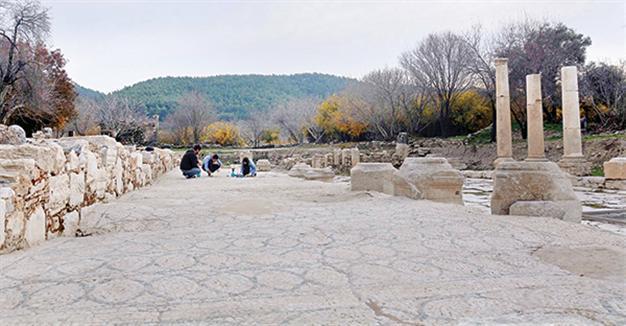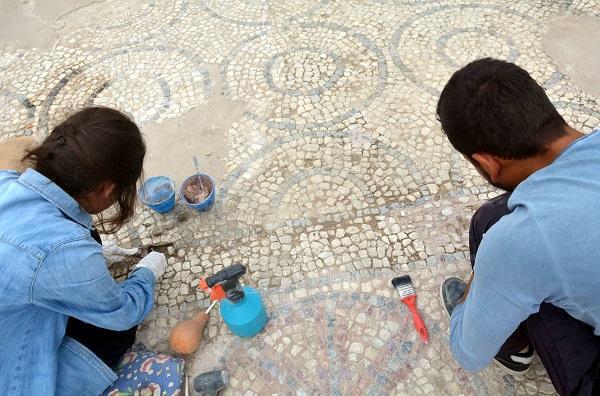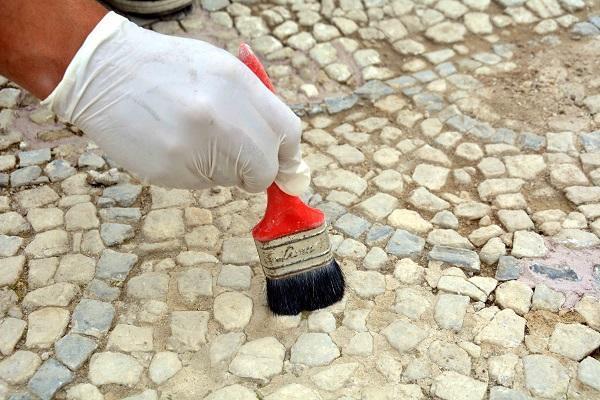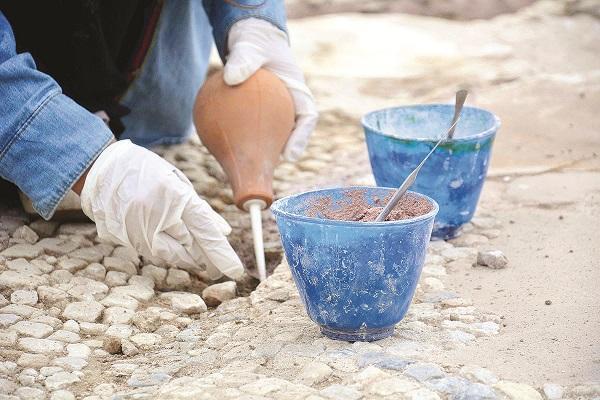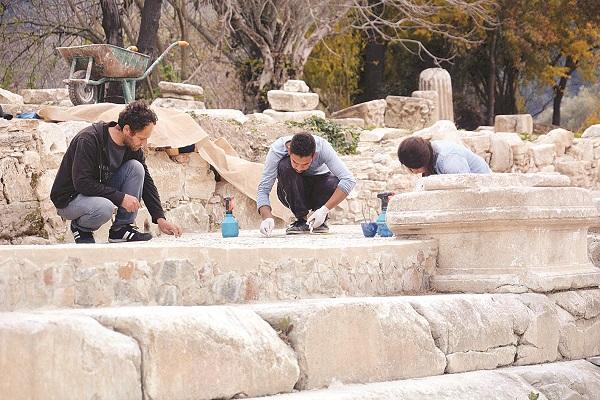Byzantine mosaics set to return to former glory
MUĞLA – Anadolu Agency

AA Photos
Mosaics dating back 1,600 years will soon provide another reason to visit the ancient city of Stratonikeia, one of the largest marble cities in antiquity.
“We started working in 2013 and will complete it this year. After the conservation work is completed, this place will be opened to visitors. People will be able to walk on the mosaics with ease,” Pamukkale University Department of Protection and cultural heritage restoration expert Ali Yaşar said.
A city in the ancient Karia region in the southwestern province of Muğla, Stratonikeia retained its significance during the Hellenistic, Roman, Byzantine, Anatolian beylik, Ottoman and Republican eras.
The area, known as the northern gate of the city, was home to the most important structures in the area, Yaşar said.
The Byzantine-era mosaics are located in the eastern section of the northern gate, Yaşar said, adding that they had been carrying out conservation work in the area for three years.
Unique material being used
Yaşar said they conducted preliminary work before starting the conservation work. “Within the scope of this work, we took samples from the unique mosaic mortar. Using these samples, we made analyses to obtain material similar to the unique one. As a result of this analysis, we started conservation work here.”
Yaşar said the ancient earthquakes had caused great damage to the region and that columns and other parts of buildings had fallen on the mosaics during excavations, causing great damage.
He said they had started conservation work after the excavations.
“Our purpose is to enable mosaics here to survive for many more years and be seen by visitors. We are working with four restorers and three workers. The mosaic panels date back to the Byzantine era, 1,600 years ago. They were separated into various panels and each panel has different figures and designs. During the works here, we maintain the same technique that the mosaic workers used in the ancient era. We never use stock materials in the conservation,” Yaşar said.
Yaşar said the examples of the arts of the Byzantines could also be seen in the mosaics, which were produced using the marble material unique to the region.
The mosaics will be preserved in much the same way, Yaşar said. “The cracks were preserved. We are trying to reinforce the unique texture without damaging it.”
Professor Bilal Söğüt, an academic at Pamukkale University Archaeology Department and the head of the Stratonikeia excavations, said they were discovering important data every year during the excavations.
He said they had also revived the mosaics in a 3D environment and presented it digitally.
